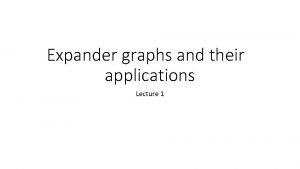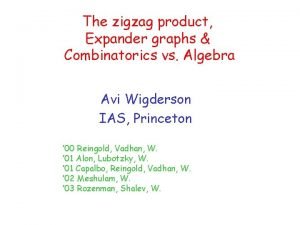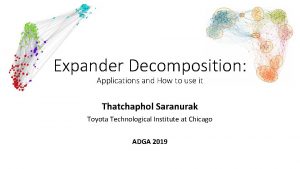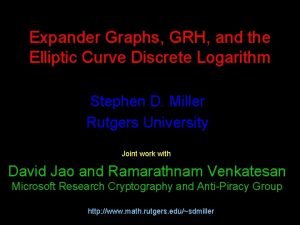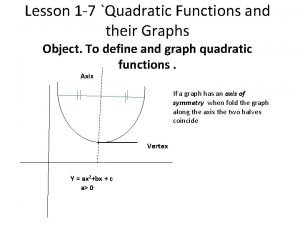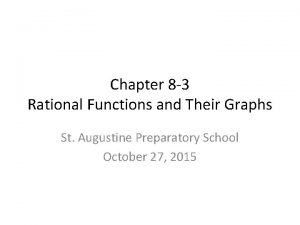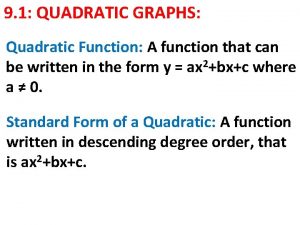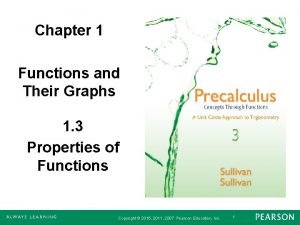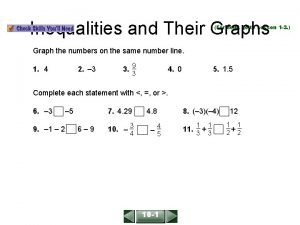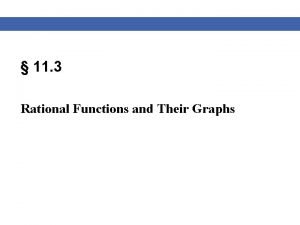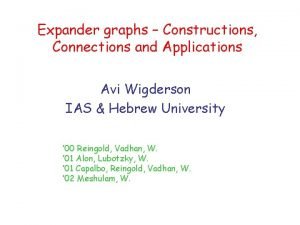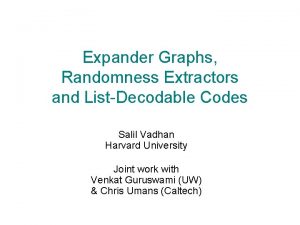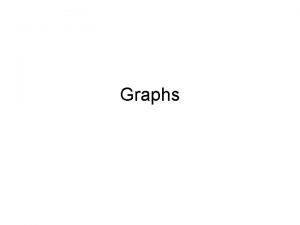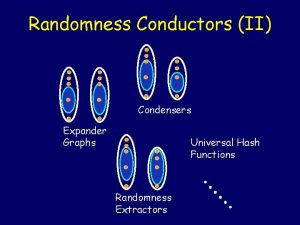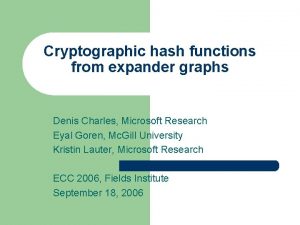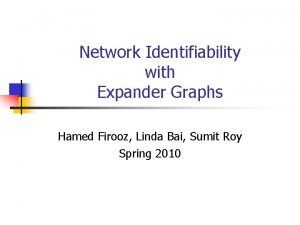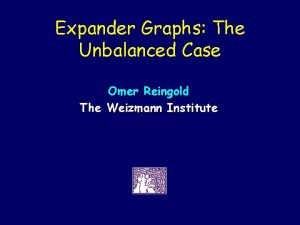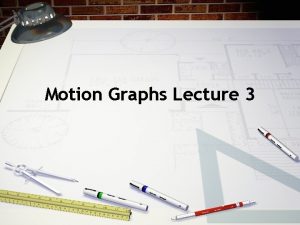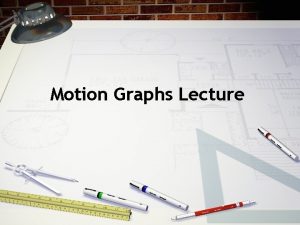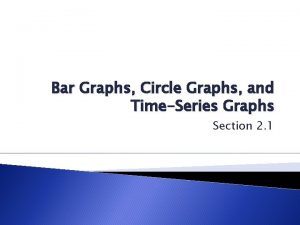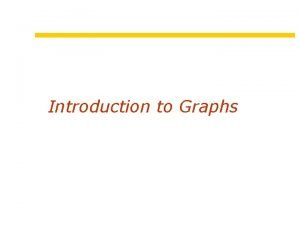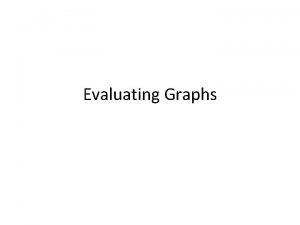Expander graphs and their applications Lecture 1 Course


















- Slides: 18

Expander graphs and their applications Lecture 1

Course materials • Course website: http: //www. wisdom. weizmann. ac. il/~dinuri/courses/20 expanders/index. htm • Main manuscript: https: //www. cs. huji. ac. il/~nati/PAPERS/expander_survey. pdf

Graphs • Fundamental way to describe relations between pairs • Natural: relations between people, proteins, particles • Artificial: Communication network • • • Combinatorics: this is the most basic object Algebra: Cayley graphs describe relation of group elements Geometry: natural “shortest-path” metric Topology Probability: Convergence of Markov chains • Which properties of graphs are universally important?

Expansion of graphs • First defined in the 1970’s by Pinsker • Definition can be given in 3 languages • Combinatorially • Probabilistically • Algebraically

Three motivating problems: 1. Hardness results for linear transformations 2. Construction of good error correcting codes 3. Deterministic error amplification for RP (the class of randomized polynomial time algorithms with one-sided error)

Hardness for linear transformations Valiant’s problem (1976) – a classical lower bound problem :

I Hardness for linear transformations Valiant’s problem (1976) – a classical lower bound problem : Implementing matrix-vector multiplication takes n 2 gates Lower bound goal: find an explicit transformation with such complexity

Super concentrators

• Valiant conjectured that a super concentrator must have many edges, super-linear • He later proved that’s not true! Expanders imply sparse superconcentrators

II Error Correcting Codes • Shannon 1948 “A mathematical theory of communication”

Are there good codes with efficient encoding / decoding?

III Error reduction in randomized algorithms Randomized algorithms are sometimes simpler, and more powerful, than deterministic ones Example: primality testing: given a number x, is it a prime number? Rabin-Miller and Solovay Strassen gave randomized algorithms for this problem A(x, r) is a (one-sided) randomized algorithm if for every input x, • If x is prime, Prr[A(x, r)=yes] = 1 • If x is not prime, Prr[A(x, r)=yes] < ½ Can the ½ error be decreased?

III Error reduction in randomized algorithms To decrease the error below ½, run the algorithm several times with fresh random strings r 1, r 2, …, rt. • If x is prime, Prr 1, r 2, …, rt[A(x, r 1)=A(x, r 2)=…=A(x, rt)=yes] = 1 • If x is not prime, Prr 1, r 2, …, rt[A(x, r 1)=A(x, r 2)=…=A(x, rt)=yes] < 1/2 t Can this be done without using more random bits?

”magical” graphs

For example, is this a magical graph?


THE END

Exercise • Exercise 1: show a lower bound on the number of linear transformations, and prove that most such require circuits with almost quadratic number of gates • Exercise 2: show that if A is super regular then it is an adjacency matrix of a graph that is a super concentrator • Exercise 3: show a greedy (non-algorithmic) construction of a code with positive rate and distance: enumerate all messages, and place their encoding in the large space in a greedy manner
 Expander graphs and their applications
Expander graphs and their applications Software implementation of state graph
Software implementation of state graph Graphs that enlighten and graphs that deceive
Graphs that enlighten and graphs that deceive Algebra expander
Algebra expander Expander decomposition
Expander decomposition Logarithm expander
Logarithm expander Lämpöpatja sänkyyn
Lämpöpatja sänkyyn Breast cancer reconstruction forum
Breast cancer reconstruction forum Sagittal expander
Sagittal expander Comparing distance/time graphs to speed/time graphs
Comparing distance/time graphs to speed/time graphs Degree and leading coefficient
Degree and leading coefficient 01:640:244 lecture notes - lecture 15: plat, idah, farad
01:640:244 lecture notes - lecture 15: plat, idah, farad Horizontal asymptotes rules
Horizontal asymptotes rules Quadratic functions and their graphs
Quadratic functions and their graphs 8-3 rational functions and their graphs
8-3 rational functions and their graphs Quadratic graphs and their properties
Quadratic graphs and their properties Chapter 1 functions and their graphs
Chapter 1 functions and their graphs 3-1 inequalities and their graphs
3-1 inequalities and their graphs Rational functions and their graphs
Rational functions and their graphs
